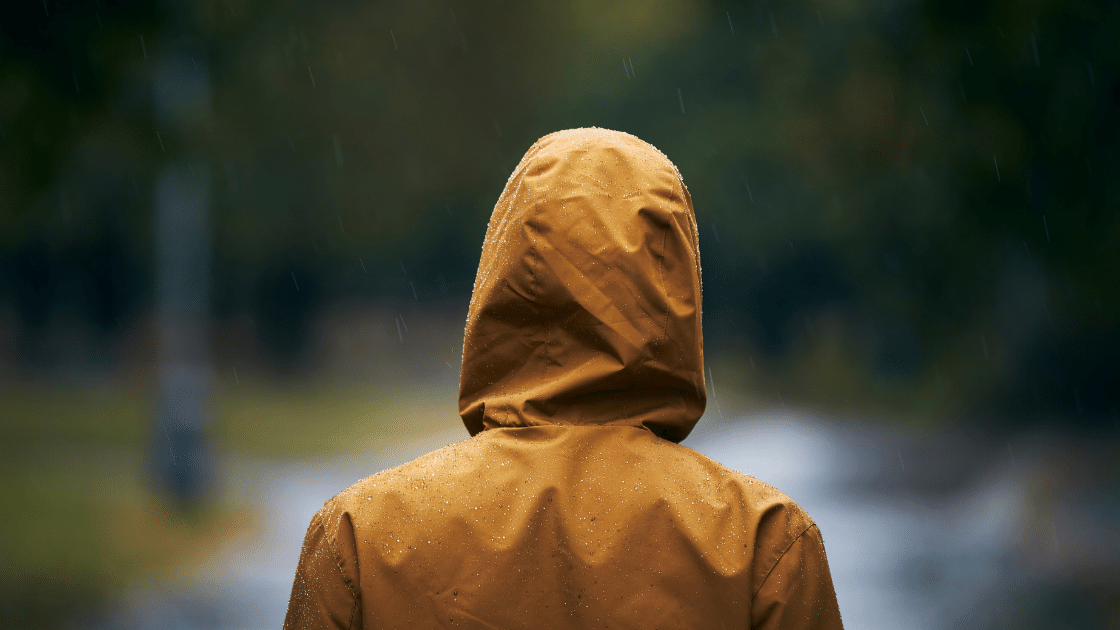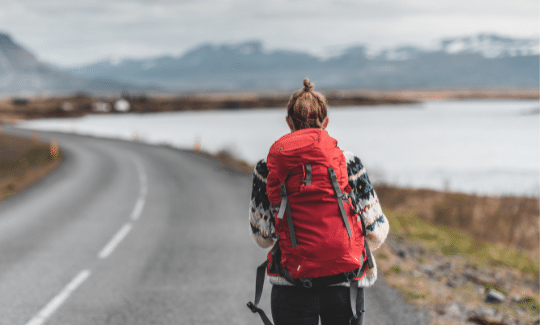7 Tips To Help You Choose Hiking Clothes
Hiking in the Great Outdoors is a fun and exciting activity, but it’s not something you can do in your city clothes!
Step in any outdoor store though, and you’ll be looking at a mountain of different types of clothing from a variety of brands who all claim their product is the one you need.
To help you decide and to make your hikes more comfortable and practical, here are a few tips to guide you when choosing the ideal clothes for your trips!
#1 - Use layers
Layering your clothes is the best option when out in the wild.
Because the weather is often unpredictable, you can adjust the number of layers you wear depending on the temperature.
A base layer (long underwear and shirt) made from merino wool is the ideal choice. Merino is a light and breathable material that is very effective at trapping heat. Plus, unlike synthetic fabrics, it has anti-bacterial properties that allow it to remain smell free for several days!
On top of your base layer you can wear a t-shirt for extra comfort, then a fleece for more warmth and finally a waterproof jacket to protect you from the rain and the wind.
#2 - Find a good balance between water resistance and breathability
If you’re suddenly caught in the rain while hiking, a good waterproof jacket can make the difference between having to go back home a soaked mess or continuing mostly dry on your way.
The problem is that not all jackets have the same level of water resistance, and that is because none of them are actually 100% waterproof. Let me explain.
Just like with a tent, you measure the level of water resistance via the hydrostatic head. This number indicates in millimetres the height of a column of water that can press on a square centimetre of fabric before it passes through.
Slightly confusing, I know, but all you really need to remember is that this scale goes from 1.500 to 20.000 and that the higher the number the higher the water resistance.
Along with the hydrostatic head, also check whether or not your jacket has sealed seams and zippers, as those will prevent any water from leaking in.
There is one more factor to consider, and that is breathability. The higher the breathability, the less your jacket will trap heat and moisture. This is indicated by the number of grams of water vapour that can pass the fabric in 24 hours.
Again, pretty confusing, but just remember that the higher the number the more the fabric will breathe, and will therefore be suited to more intense activities.
Try to find a jacket with a balance between these two factors that best suits your intended use!
#3 - Don’t use bulky jackets if not necessary
Especially if you’re headed to a cold environment, it can be tempting to invest in a warm and fuzzy coat.
Problem is, those are heavy, bulky and not very breathable. They are ideal for environments that are constantly cold, such as in the snow or at high altitudes.
If you’re expecting some significant temperature fluctuations then it’s easier to stick with layering.
#4 - Pick the right fabrics and materials
What your clothes are made of will reflect how they will handle the conditions in the field.
You want them to remain dry, or dry quickly, as well as to keep you warm while still being breathable. Synthetic fabrics such as nylon and polyester, along with natural materials such as wool and down, will perform the best for these conditions.
The one fabric that you absolutely must avoid is cotton. Have you ever seen a hiker in blue jeans? Probably not, and there is a reason. Cotton has the unfortunate characteristic of being able to absorb a lot of water, which is the reason why wet jeans become so heavy. This also means that, contrary to synthetic fabrics, cotton will also take a very, very long time to dry. While a pair of synthetic hiking pants will dry in a matter of hours, a pair of cotton jeans can take more than a day!
The same goes for socks. A reason why you might be getting blisters on your hike could be due to the use of cotton socks that absorb the moisture produced by your foot. The socks become humid, heavy and uncomfortable, increasing the friction with the skin. The skin then reacts by forming blisters as a defence mechanism. Hiking socks, on the hand, are made of synthetic fabrics, or a synthetic/wool. This makes them much more effective at evacuating moisture from around your feet, keeping them dry and blister free.
#5 - Choose stretchy and comfortable clothes
Hiking should is a physically intensive activity, so your clothes need to be able to stretch without restricting your movements. Make sure you choose the right sizes and that you test them out first before taking on a bigger trek.
#6 - Bring a few accessories
Have a few accessories handy, such a scarf, a hat and gloves.
This will help you adapt on the spot to any changes in temperature. A good beanie will also be great to sleep with if you’re planning on camping.
#7 - Pick the right colours
Hiking clothes, and especially jackets, come in a variety of colours.
While in some cases it this is meant as little more than a fashion choice, there are situations in which the colour you choose can impact your trip.
Neutral colours (such as green, brown and beige) allow you to blend in more easily with the environment. This is ideal if you prefer to be less visible, such as when tracking and spotting wildlife.
Bright colours, on the other hand, make you more visible and are the best choice when hiking in remote areas, such as high altitude hikes and climbs. The reason is that, in case of an accident, you will be more visible to both land and aerial rescuers.
Choosing the right clothes will make a huge difference on how much enjoyment you’ll get out of a hike.
Note down all of these tips so that you always keep them in mind when choosing what to wear on your next adventures!
Did you enjoy this article?
Feel free to save or pin this image so that you can always look back on this blog post!












Have you been wondering, like so many hikers, whether or not you should invest in a good pair of hiking poles for your trekking adventures? Here is a list of all the pros and cons you should consider!